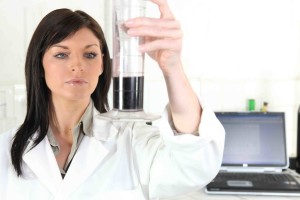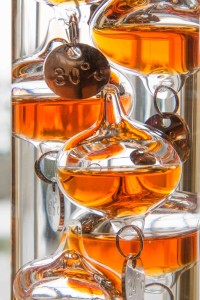How are we measuring alcohol consumption?
How do we assess the level and change in the level of alcohol consumption in Ireland? Why is this important? This is important because accurate measurement of alcohol consumption is desirable because the level and pattern of consumption – and changes in these – have implications for government policy. Any gap between actual consumption and desired consumption (from a health perspective in terms of recommended consumption) and particular features of alcohol consumption have implications for policy instruments. Measurement issues include ‘per adult’, definition of ‘adult’, age structure of adult population, population at a point in a year not average population of year, ‘non-drinkers’, unrecorded consumption, tourism, clearances, stock changes and consumption, aggregation to get total alcohol consumption.
Measurement issues – a matter for policy
One must distinguish, for example, between the average level of alcohol consumption and the pattern and type of that consumption (quantity per drinking occasion, binge-drinking and frequency).
In the latest (2015) OECD Health Statistics report Ireland emerged as having the ninth-highest per adult consumption patterns at 10.6 Liters Per Annum in 2013.
The data generally refer to 2013 although the actual report is published in 2015. Germany had a per adult consumption rate of 10.9 LPA while France had 11.1 LPA. These adult consumption figures compare with Denmark on 9.5 LPA, Sweden on 7.4 LPA and the UK on 9.7 LPA while the US was on 8.8 LPA (in 2012, the nearest available year).
Per adult consumption
‘Per adult’ is the preferred quantifier rather than ‘per person’ in any assessment of alcohol consumption rates because non-adults generally do not or should not consume alcohol.
Using per person can be distorted by the proportion of non-adults in the population.
For example using my own calculations, the figure for alcohol consumption per person in 2014 was 8.64 LPA which emerges as 11.09 LPA per adult.
Non-drinkers
Clearly all the alcohol is consumed by less than the adult population of Ireland if there are non-drinkers.
In 2010 WHO figures put the percentage of non-drinking adults (from earlier data) at 19.1% in Ireland. Elsewhere, Sweden returned a figure of 31.2%, Germany 19.7%, Denmark 11.4% and France 5.2%.
The EU Barometer 2010 found the corresponding figures as follows:
* Ireland 24%
* France 17%
* Sweden 10%.
The two sources give very different estimates for France and Sweden.
With an adult consumption figure of 10.6 LPA – and on the assumption that 19.1% of adults are non-drinkers – the real alcohol consumption figure per drinking adult is 13.1 LPA and if the 24% teetotal figure is taken instead, this figure rises to 13.95 LPA per drinker. Comparisons with France are very different depending on which French non-drinker proportion is used.
Recorded and Unrecorded consumption
Clearances-based consumption figures are not equivalent to total consumption. Clearances refer to official or recorded consumption in the domestic market, not to total consumption by the domestic population. Irish people on holiday abroad consume alcohol and foreign tourists visiting Ireland consume it here.
There’s other unrecorded consumption too such as externally-sourced alcohol in cross-border shopping and home production.

Clearances refer to the official or recorded consumption in the domestic market, not to total consumption by the domestic population.
Recent estimates of average alcohol consumption
Our alcohol consumption peaked in 2001 when we drank 14.44 LPA per adult. Last year it stood at 11.09 LPA.
So there’s been a substantial decline in consumption – down 23.2% or nearly one-quarter since 2001 via 13.49 LPA in 2007 followed in 2009 by a figure of 11.37 LPA.
Estimates of average alcohol consumption: recent mix
By alcohol consumption type, the wine category has grown significantly since 2001.
Back then, wine comprised just 14.3% of total alcohol consumption. By last year this had grown to 26.8% where beer held a 47.2% share of the market, cider 7.8% and spirits 18.1%.
During this period beer volumes declined from 23.94 Million Litres Per Annum to 18.82 MLPA and spirits declined from 9.31 MLPA to 7.22 MLPA. Cider declined from 4.13 MLPA to 3.12 MLPA and wine rose from 6.22 MLPA to 10.68 MLPA.
While, as noted, average total alcohol consumption declined by almost a quarter, the wine sector’s average consumption increased by 44.2% between 2001 and 2014.
International Performance
During this time (2001 to 2012/13) the OECD recorded France’s alcohol consumption figure dropping 20.7% from 14.0 LPA to 11.1 LPA while Germany’s fell 12.8% from 12.5 LPA to 10.9 LPA.
The UK recorded an 11.8% decline in consumption from 11.0 LPA to 9.7 LPA while Portugal’s consumption fell 14.9% from 12.1 LPA to 10.3 LPA (in 2011, the latest available figures).
Ireland’s own consumption fell 26.9% from 14.5 LPA to 10.6 LPA.
In conclusion, the means by which alcohol consumption is measured is important in terms of a national policy on alcohol for it’s a social as well as an economic issue.
To this end, we must look closely at how the consumption figures have been arrived at in terms of recorded consumption versus total consumption, the body supplying the figures, the number of adjustments made and whether ‘per adult’ refers to those over 15 years of age or those over 18 (or those over 21).

Accurate measurement of alcohol consumption is desirable because the level and pattern of consumption – and changes in these – have implications for government policy.








